| |||||||||||||||||||||||||||||||||
| Getting Started | Facts > Triumph > Apostolic Scholarship |
| Hellenism | Syncretic Judaism | Jesus legend | Jesus Scholarship | |
|
|
Apostolic Legend | Apostolic Scholarship | Over Paganism | Over other Christianities |
| Many
early Christianities |
|
If the myth
of apostolic succession isn't true, what is? What does the evidence
say about first and second century Christianity? You can skip to the answers at the bottom of the page. Or grab a cup of coffee, and settle in for the details... |
|
Dating our gospels
There are lots of reasons behind this, starting with the fact the traditional gospel authorship isn't biblical!—the gospel manuscripts don't name the authors. Yes, I know that sounds silly. After all the New Testament you have does name the authors, right there in the table of contents and again there at the beginning of each book. What, am I nuts? Well, the original gospels didn't name the authors. The "authors' " names were actually first stuck on the gospels by a Catholic priest, a dead white guy named Papias of Hieraopolis, maybe (people argue) in the mid-second century. And Papias said that of the four gospelers, only Matthew knew Jesus—yet Matthew copies extensively from Mark, who never met Jesus. Everyone agrees that's silly. If you're interested in details, try the books at the bottom of this page; it's a complicated but fun topic. Many scholars guess these gospels existed before 150 AD—but scholarly or not, a guess is still a guess. Smart people like you want to know the evidence. What is the evidence? First, except for a thing called "P52," a tiny mid-second century fragment maybe from John, there are no gospel manuscript fragments till about 200 AD (and no complete Gospels till the fifth century). What's more, the Apostolic Fathers, guys like Clement,
Polycarp and Ignatius In other words, there is no evidence our modern picked-by-Catholic- priests-in-the- fourth-century gospels existed before 150 AD! And if our four modern picked-by-Catholic- priests-in-the- fourth-century gospels did exist within 120 years of Jesus' death, there is absolutely zero evidence they contributed to Christian belief or worship before 150 AD. Wow. 7-11 video tapes? So you can imagine how surprised modern believing scholars were when they first set out to write a comprehensive history of Jesus' life by combining the details in each of the four gospels. They made gospel parallels—the text of Matthew, Mark, Luke and John in columns, side-by-side—and discovered the gospels disagree with each other. Oops. And I don't mean the Gospels disagree in the sense Luke and Matthew give Jesus' genealogy and Mark doesn't. I mean they disagree in the sense that Luke and Matthew give genealogies with different people on them. |
||||||||||
|
Leading reasonable people to believe they can't both be true. Don't
you hate it when that happens?
Once the facts forced people to understand the gospels are not reliable histories, it was Katy-bar-the-door. |
By the way |
|
The scholarship we're talking about starts with the idea that the New Testament can be studied with logical scientific reasoning—with methods that don't involve magic. |
|
Pretty soon people noticed that the gospels describe different theologies. Mark's Jesus is a miracle worker who gives out his message in cryptic parables whose meaning he explains only to His inner circle. John's Jesus is self consciously transcendent. There's a long list—my point here is to mention, not to blather details. Other people noticed parts of the gospels looked suspiciously like pagan mythology and pagan philosophy. I'm sorry, but we don't have time to go into our Gospel's different theologies, or details about which one has which Pagan philosophy. |
|
Many early Christianities |
|
|
By the way |
|
New Testament / early Church scholarship's critical literature is oceanic. Our point here at POCM isn't a voyage; our point is a few minutes at the beach to get a sense of what the sea is like and where it can take us. |
|
Yes, I do know this sounds nutty, but it's part of mainstream modern scholarship. Here's how scholars get there: |
|
Paul letters weren't the only early pre-gospel Jesus-related (it's not accurate to say "Christian"!) writing. Other early Jesus-related writing included the collection of Jesus' sayings Matthew and Luke used to write their gospels—it's called the Synoptics Sayings Source, or Q. The Synoptics Sayings Source was written, and presumably passed around, during the generation or two after Jesus died and before the gospels were written. And, here's the thing, the Synoptics Sayings Source never mentions Jesus death and resurrection, or Jesus bringing salvation. Harvard's Professor Helmut Koester describes >> |
In the Synoptic Sayings Source, "Christological titles for Jesus are strikingly absent, [scholar-speak for 'Jesus is never called Christ'] nor is Jesus proclaimed as the one who rose from the dead and who will return in the future." [Helmut Koester, Introduction to the New Testament, volume 2, History and Literature of Early Christianity, 2d ed, pg153] and Synoptic Sayings Source is evidence "for the development of a Jesus tradition that had no relationship to the proclamation of the cross and resurrection of Jesus." [Helmut Koester, Introduction to the New Testament, , volume 2, History and Literature of Early Christianity, 2d ed, pg154] |
|
In fact, get this, although gnostic Christianity survived for hundreds of years—and in places like Egypt was older and stronger than orthodox Roman Christianity—the gnostics never got around to having Jesus be the savior by way of his death and resurrection! For the gnostics, Jesus brought salvation by bringing wisdom, wisdom you could learn from another gnostic. No cross. No resurrection. Did your Sunday school class skip this too? |
|
An early schism St. Paul, from the Hellenized city Tarsus, saw it different. You became Christian, you didn't get circumcised (whew!), you didn't have to follow Jewish ritual—you didn't convert to Judaism. The two sides argued. You read the New Testament, you get the feeling Paul and his pals won. That's because the New Testament is partly a product of the first Christian schism, written before the convert / don't convert question was finally settled, including gentile- permissiveness as a theme, spinning Paul's point of view. |
|
What you miss, reading Acts, is that the gentiles-convert sect did not convert to Paul's brand of Christianity. They formed their own Christianity. They became (probably, details are fuzzy) the Ebionites. They followed Christ, but insisted initiates also convert to Judaism. They had their own New Testament, now lost in the bonfires of suppression. The later Church fathers, Tertullian, Origen, Hippolytus, describe the Ebionite "heresy" lasting well into the third century AD. |
By the way |
|
You'll probably be interested to hear the Ebionites denied the divinity of Jesus and his virgin birth—presumably those legends got tacked on to the Christ myth after the first schism. |
A
zoology of Christianities
In the decades and centuries that followed the first schism, Christianity continued in the pattern of the ancients' other Pagan religions. The Pagan habit of doctrinal freedom led Christ's believers to develop dozens of different Christianities. Here's a partial list:
|
|
These different Christianities were often defined by beliefs about the "nature" of Jesus—was he "consubstantial" with God, was he really human or really God, or really both, or what? That makes sense—the first Christians had to fit the square peg of Greco-Roman Gods- and- divine sons into the round hole of strict Jewish monotheism. Three Gods that were really one God was a new idea—something to argue about. Other things weren't new, and people didn't argue about them. What the early Christians didn't split into new sects over were baptism, the Eucharist, the soul, eternal life, salvation, etc.—exactly the things they inherited from the other ancient Pagan religions. Everyone knew how they worked. Why argue? |
Different
Bibles. We think the New Testament is the four Gospels, Acts, and
the Epistles. The first Christians didn't think so.
|
||||||||||||||||||||
|
|
By the way |
|
Have you maybe noticed the "Jewish" Old Testament isn't the book modern Jews use? That's because the books of Christian Old Testament were also picked not by Jews but by orthodox Roman Catholic clergy. Who'd 'a thunk it? |
|
Basically our New Testament was put together late in the fourth century, with books picked by Roman Catholic clergy; the modern list of twenty-seven books was first published as part of Bishop Athanasius Easter Encyclical in 367 AD. They set the number of Gospels at four because that's the number of winds. I am not making this up. |
|
|||||||
Good Books for this section
Gospel Truth
|
Instead of pushing his own theories and opinions, Shorto describes the spectrum of modern scholarly opinion, from Jesus-is-a-myth to the-gospels-are-history. You get the names leading scholars in each camp, with a synopsis of their opinions—a great aid to your further reading. Absolutely the best introduction to modern New Testament scholarship, because it's written not by a scholar with an opinion to sell, but by an interested but dispassionate professional magazine writer who researched all sides of the issue and who knows how to write clearly. The result is a clear and easy to read overview of modern New Testament scholarship, from Old Testament prophecy through resurrection and on to how modern pastors include, or ignore, NT scholarship in their daily ministry.
|
Introduction
to the New Testament
|
This book is a treasure—an excellent place for new students to start and a valuable reference if you already know plenty. A clearly written, readable roundup of modern New Testament scholarship by a giant in the field. Includes the history of who wrote what, when—and who copied from whom. Not just the canonical books, but also Q, the Gospels of Thomas, Hebrews, etc. etc. Wow. Also details the history of which sects developed in each region, when. Not what you learned in Sunday school. Highly recommended for any serious student.
|
|
Ancient Christian Gospels Their History and Development
|
Do you know the oldest surviving manuscript for John? How about Mark, Matthew, Luke? When were each of the gospels first mentioned by another Christian writer? What is the evidence about who wrote them? How about the Gospel of Thomas, the Egerton Gospel, the Synoptic Sayings Source, and other early non-canonical gospels? They're here too. You'll even find detailed analysis of the late first and early second century Apostolic Fathers' (Clement, Polycarp, Ignatius) gospel quotations. [Hint—there aren't any; but the Apostolic Fathers did quote gospel-like saying of Jesus from other sources.] Why does this matter? Because it shows that the gospels themselves are not reflected in any Christian records until the second half of the second century! A well written, readable, but extremely technical scholarly analysis of the early Christian writings. Too detailed for beginners, but a fascinating read for advanced students and an excellent reference.
|
|
|
For hundreds of years everyone assumed that the earliest Christians were orthodox New Testament Roman Christians, and"heretical" Christianities—like Gnosticism and Marcionism—developed later, branches off the original orthodox trunk. Then in the 1930s this German guy named Walter Bauer decided to actually look at the evidence. Imagine! What he discovered was that pretty much everywhere he looked—Syria, Palestine, Egypt, etc.—the "heresies" weren't branches off any trunk, they were the original local Christianities. And they weren't small marginal sects, they were the main local Christianities. The evidence shows that all around the Mediterranean, outside Rome, the orthodox New Testament Roman Christianity was a secondary sect, a sect that became dominant only after the conversion of Constantine gave it the advantage of Roman swords. Wow. No wonder the big boys call this as a paradigm shattering book. Scholarly and technical, especially in the tedious first section of chapter one. Stick with it, because it gets fun and exciting. Out of Print, not available at Amazon. Try a used book seller. |
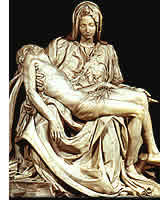
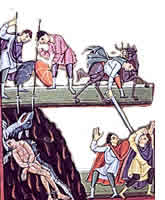 ..
..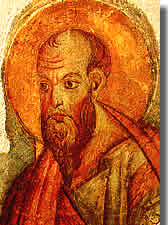

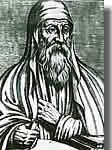 were
Christians alive in the late first and early second century. We still
have copies of stuff they wrote. And here's the thing—they do
not quote, or even mention, the gospels. In fact no
Christian quotes or mentions our modern gospels
until the middle of the second century
AD.
were
Christians alive in the late first and early second century. We still
have copies of stuff they wrote. And here's the thing—they do
not quote, or even mention, the gospels. In fact no
Christian quotes or mentions our modern gospels
until the middle of the second century
AD. 
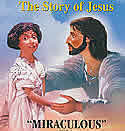 The
New Testament
The
New Testament  Jesus
People
Jesus
People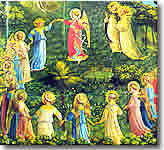

 Roman
Christian tradition wasn't the only game going in the pre- New- Testament-gospel
decades after Jesus. The gnostic Christians were around
then too, and they used the
Roman
Christian tradition wasn't the only game going in the pre- New- Testament-gospel
decades after Jesus. The gnostic Christians were around
then too, and they used the 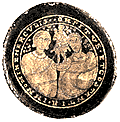


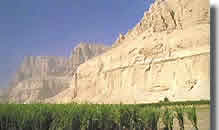

 How
we got our New Testament
How
we got our New Testament


